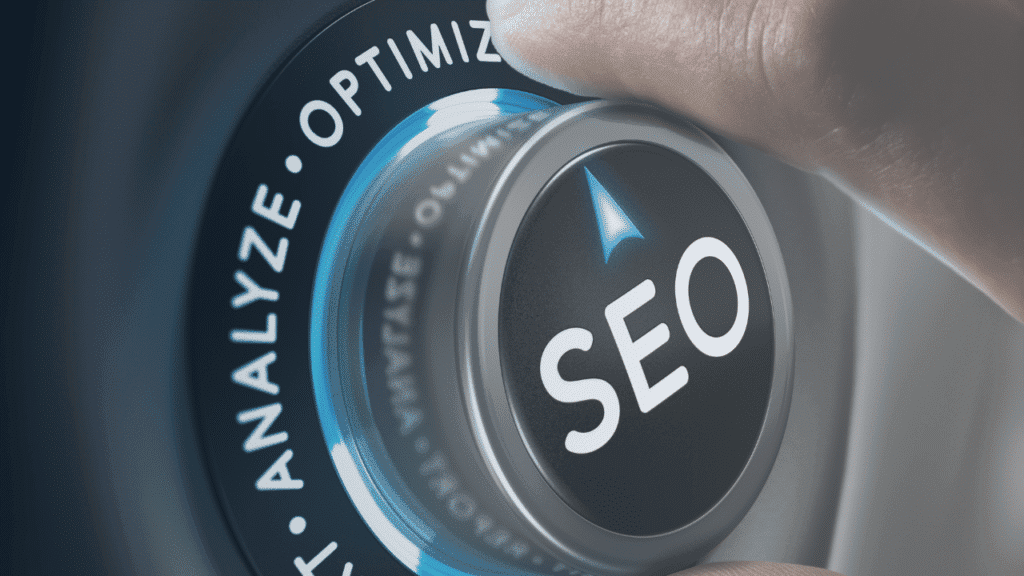Speed is a key factor that directly influences your website’s search engine ranking and user experience. When your site loads quickly, visitors are more likely to stay and engage with your content, which can lead to better conversion rates. Slow-loading pages can deter users and negatively impact your SEO efforts, making it imperative to optimize your website’s performance. To examine deeper into this topic, check out The Impact of Page Speed on SEO and User Experience.

Key Takeaways:
- Website Speed significantly impacts SEO rankings, as search engines favor fast-loading sites when determining search results.
- User Experience (UX) is enhanced by quick load times, leading to lower bounce rates and increased user engagement.
page speed can improve conversion rates, as users are more likely to complete actions on fast websites.
Understanding Website Speed
While you may not realize it at first, website speed plays an vital role in the overall success of your online presence. A fast-loading site not only enhances user experience but also positively impacts your search engine ranking. In today’s digital landscape, where users expect instantaneous access to information, it is vital that you grasp the significance of website speed and the various factors that contribute to it.
Definition and Metrics
About website speed, it refers to the amount of time it takes for your web pages to load fully in a user’s browser. Several key metrics are used to measure this speed, including Time to First Byte (TTFB), First Contentful Paint (FCP), and Fully Loaded Time. Each metric provides insights into different aspects of your site’s performance, helping you identify areas that may need improvement.
About website speed, you should focus on the loading times that users experience, as well. Metrics like Page Load Time and Speed Index reveal how quickly your content becomes visible and usable. These measurements help you pinpoint specific performance issues, allowing you to make informed decisions about optimizing your website.
Factors Affecting Website Speed
On your journey to improving website speed, it is vital to understand the various factors that can impact performance. From server-side configurations to front-end optimizations, a multitude of elements come into play. Here are some of the most prominent factors:
- Server response time: The speed at which your server processes requests.
- Hosting quality: The reliability and performance of your hosting service.
- Image and file optimization: Properly sized images and files can reduce load times.
- Code efficiency: Clean and optimized code helps your pages load faster.
- Browser caching: Storing resources helps decrease loading times for returning visitors.
Assume that you analyze and address these factors effectively; your site will likely experience substantial speed improvements. Additionally, consider other elements such as third-party scripts and resource loading orders, which can also play a significant role in your website’s loading performance.
Indeed, factors like network connectivity, device performance, and website design choices can dramatically influence website speed. A well-structured site architecture and adaptive design can contribute to a better loading experience for users. You might want to evaluate the following aspects as well:
- Content Delivery Network (CDN): Using a CDN helps distribute your content closer to users worldwide.
- Minification: Reducing the size of your CSS, JavaScript, and HTML files can enhance speed.
- Lazy loading: This technique only loads images and resources as users scroll, improving initial load time.
- External embedded resources: Minimize reliance on slow-loading resources from external sources.
Assume that you implement these practices; you will likely see your website speed noticeably improve, which can lead to better user engagement and potentially higher search engine rankings.

Website Speed and SEO
Even in a digital landscape where competition is fierce, website speed plays a pivotal role in search engine optimization (SEO). When your site loads quickly, not only does it create a more pleasant experience for visitors, but it also fosters trust and credibility, which are imperative for retaining users and encouraging them to engage with your content. Search engines, such as Google, utilize various ranking factors to determine the position of your site on their result pages, and page load speed is among the key metrics they consider. When your site is sluggish, it can lead to higher bounce rates and lower user engagement, both of which negatively influence your search engine rankings.
Impact on Search Engine Rankings
Among the factors that affect your search engine rankings, website speed stands out as a significant one. Google has indicated that site speed is a direct ranking factor for web searches, meaning that the faster your site loads, the better chance you have to secure a higher spot in search results. Additionally, with the emergence of Core Web Vitals as part of Google’s ranking criteria, load performance is not just important but imperative for appearing in searches. By optimizing your site for speed, you take proactive steps toward improving your visibility, ultimately drawing more traffic and potential customers to your business.
Case Studies and Research Findings
Around the web, various case studies demonstrate the correlation between website speed, user experience, and search engine performance. Here are some compelling examples:
- Amazon discovered that every 100-millisecond increase in load time resulted in a 1% decrease in sales.
- Google has found that when mobile page load times increase from one second to ten seconds, the probability of a mobile site visitor bouncing increases by 123%.
- A report from Akamai revealed that a 2-second delay in web page load time increased bounce rates by 103% and resulted in a 7% reduction in conversions.
- Walmart implemented changes that reduced their page load time by 2 seconds, leading to a 2% increase in conversions.
- Shopzilla improved their load time from 6 seconds to 1.2 seconds, resulting in a 12-25% increase in revenue.
Rankings and user engagement are directly tied to speed, as highlighted by the aforementioned studies. Websites that take the time to invest in optimizing load times can enjoy enhanced visibility and higher conversion rates. Your commitment to improving website speed will not only bolster your search engine rankings but will also create an effective user experience that keeps visitors engaged and revisiting your site.
Website Speed and User Experience (UX)
For website owners and marketers, understanding the relationship between website speed and user experience (UX) is vital for improving engagement and retention. Your site’s loading time directly influences how visitors perceive their interaction with your content. A fast-loading website not only retains users’ attention but also facilitates seamless navigation, allowing them to find the information they need efficiently. When users experience a site that loads quickly, they are more likely to remain on the page and explore further rather than bouncing to a competitor’s site. Consequently, enhancing your website’s speed is directly linked to improving overall user satisfaction and fostering a positive perception of your brand.
User Behavior and Expectations
Expectations have evolved in the digital age, with users demanding instant gratification. You are likely to have experienced frustration waiting for a page to load, which can sour your perception of an otherwise excellent service. In fact, users typically expect a web page to load in under three seconds, and anything beyond that can lead to impatience. As you strive to optimize your site, consider the expectations of your audience, who are accustomed to instantaneous access to information and services.
Consequences of Slow Loading Times
Expectations drive immediate action; slow loading times can result in tangible fallout for your website. You may find that potential customers abandon their carts and leave your site out of frustration, leading not only to lost sales but also to a tarnished reputation. Studies have indicated that a mere one-second delay can decrease conversions significantly, as users may perceive slow speeds as a lack of professionalism or reliability. Your website’s performance directly affects how users engage with your brand and can have lasting implications on your bottom line.
Hence, understanding that slow loading times serve as a barrier to not only obtaining user trust but also maintaining your competitive edge is vital. When users encounter sluggish response times, they tend to seek alternatives that offer quicker, more efficient experiences. This can lead to increased bounce rates and diminished user retention, both of which negatively impact your site’s SEO as well. By prioritizing speed optimization, you can create a more responsive environment that meets users’ expectations and enhances their overall experience with your brand.
Tools for Measuring Website Speed
Despite the fact that many website owners focus solely on content and design, website speed should not be overlooked. It is imperative to prioritize website performance, as it directly impacts both search engine optimization (SEO) and user experience (UX). For a comprehensive overview of how website speed affects user interaction and your site’s visibility on search engines, check out The Impact of Website Speed on User Experience and SEO. Identifying reliable tools to measure and enhance website speed will provide you with actionable insights and strategies to optimize your site effectively.
Popular Testing Tools
After assessing your website needs, you can utilize various tools specifically designed to measure website speed. Some popular options include Google PageSpeed Insights, GTmetrix, and Pingdom. Google PageSpeed Insights not only provides speed scores but also offers suggestions tailored to improve performance, while GTmetrix and Pingdom deliver in-depth reports on load times and performance metrics. These tools can help you identify specific areas requiring enhancement for your overall site efficiency.
Analyzing Results and Improvements
On obtaining your website speed test results, it’s vital to analyze the findings carefully. Are there specific elements responsible for slow load times? The results will guide you in determining whether you need to optimize images, leverage browser caching, or minimize CSS and JavaScript files. Once you pinpoint the issues affecting your site’s performance, you can create a comprehensive action plan to implement these improvements systematically.
Understanding the results of your speed tests enables you to prioritize changes based on their potential impact. For instance, addressing large image files might yield significant improvements in load time, while minor adjustments to JavaScript might have a lesser effect. By focusing on high-impact strategies, you can efficiently boost your website’s performance and, consequently, enhance both your SEO ranking and user experience.

Best Practices for Improving Website Speed
Many website owners overlook the impact of website speed on user experience and search engine optimization. By adopting best practices for improving load times, you can significantly enhance both the performance and accessibility of your site. This begins with understanding and implementing optimization techniques that minimize the size of your web pages and the requests made to your server. You can leverage tools like Google PageSpeed Insights to analyze your site’s speed and receive actionable recommendations tailored to your specific needs.
Optimization Techniques
Above all, optimizing images and other media files is crucial for reducing load times. By compressing images without sacrificing quality and choosing the appropriate file formats, you can greatly decrease the amount of data that needs to be transferred when a user visits your page. Additionally, minimizing CSS and JavaScript files can streamline the code, helping to eliminate unnecessary bloat and make your website load faster. Implementing lazy loading for images and videos can also enhance performance, allowing media to load only when users scroll to them.
Content Delivery Networks (CDNs)
Content delivery networks (CDNs) play a vital role in boosting website speed by distributing your site’s content across multiple servers worldwide. This means that when a user accesses your site, they are served content from a server closer to their location, significantly reducing the latency and improving loading times. Implementing a CDN not only enhances user experience but can also positively affect your SEO rankings, as search engines favor sites that provide quick access to their content.
Plus, CDNs often include additional features like caching, which stores copies of your web pages and serves them instantly to repeat visitors, further reducing load times. They also provide enhanced security measures, such as DDoS protection, to keep your website safe from cyber threats. By combining a content delivery network with other optimization techniques, you can create a robust strategy for improving your website’s speed, ensuring a seamless experience for your users and boosting your site’s performance in search engine rankings.
The Future of Website Speed
Trends and Predictions
All businesses should be prepared for the ongoing evolution of website speed and its impact on both SEO and user experience. With the rise of technologies such as 5G networks and advancements in web development tools, you can expect a significant acceleration in how quickly users access your website. In addition, search engines are continuously refining their algorithms to prioritize faster-loading sites, meaning you may find that your site’s performance will have a direct impact on its ranking in search results. Staying ahead of these trends allows you to remain competitive and relevant in an ever-changing digital landscape.
Evolving User Expectations
To maintain engagement and retain visitors, you must recognize that user expectations are evolving rapidly. As users experience instantaneous downloads and seamless browsing on high-speed connections, they come to anticipate the same performance from every website. This shift means that a slow-loading site can significantly hinder your user engagement and could lead to higher bounce rates. Your website must meet or exceed these performance standards if you want to capture and retain user interest.
And as devices become more versatile—ranging from powerful laptops to mobile phones with strong network capabilities—users will not only expect speed but also performance consistency across all platforms. This expectation means you’ll need to constantly monitor your website’s performance metrics and optimize your site for speed, ensuring that your users enjoy a fluid experience regardless of how they access your site. Prioritizing fast-loading times will be fundamental in meeting these rising expectations and in fostering a user-friendly environment that encourages return visits and customer loyalty.
Final Words
Presently, the speed of your website is a pivotal element that affects not only your search engine optimization but also the user experience you provide. When you ensure that your pages load quickly, you enhance user engagement and reduce bounce rates, which are key factors searched by algorithms to determine your site’s rank. In a digital landscape where attention spans are short, a speedy website can make the difference between retaining a visitor or losing them to a competitor. You must prioritize optimizing your website speed to improve your online presence and attract more traffic effectively.
Moreover, by focusing on website speed, you also demonstrate to your audience that you value their time. Fast-loading pages foster a sense of professionalism and reliability, which can boost your brand’s reputation. You want to create a seamless experience for your visitors, as this translates not only to higher satisfaction but also encourages repeat visits and conversions. Overall, investing time and resources into speeding up your website is not just a technical necessity; it is an integral part of your overall strategy to succeed in the competitive online environment.
FAQ
Q: Why is website speed important for SEO?
A: Website speed significantly impacts search engine optimization (SEO) because search engines prioritize delivering a seamless experience to users. A faster website can lead to lower bounce rates, as users are less likely to leave a site that loads quickly. Additionally, search engines like Google consider page speed as a ranking factor, which means a faster site can help improve a website’s visibility in search results. Optimizing your website speed can thus enhance both your organic traffic and overall SEO performance.
Q: How does website speed affect user experience (UX)?
A: Website speed plays a vital role in enhancing user experience. When a website loads quickly, users are more likely to stay engaged and explore the content, leading to higher satisfaction. On the other hand, slow-loading websites can frustrate users, prompting them to abandon the site entirely. This negative experience can also affect their likelihood of returning in the future. A positive user experience, driven by fast loading times, encourages users to interact with the site and can eventually result in increased conversions.
Q: What tools can I use to measure and improve my website speed?
A: There are several tools available for measuring and improving website speed. Google PageSpeed Insights provides insights into your site’s performance on both mobile and desktop platforms, along with recommendations for improvement. GTmetrix analyzes your website’s loading speed and gives a detailed breakdown of areas that need optimization. Other tools like Pingdom and WebPageTest can also provide valuable data on load times, performance grades, and suggestions for enhancements. Implementing these recommendations can lead to noticeable improvements in both speed and user experience.







